Preparing for a DevOps interview in 2025? You’ve come to the right place. With the demand for skilled DevOps engineers skyrocketing, understanding the intricacies of this field is more crucial than ever. To help you navigate the complex landscape of technical interviews, we’ve compiled a comprehensive guide featuring top 30+ DevOps interview questions and answers. This isn’t just a list; it’s a strategic tool to learn and excel in your next interview. Whether you’re searching for fundamental devops interview questions or tackling advanced devops engineer interview questions, we’ve got you covered.
This article breaks down crucial concepts, from basic principles to real-world scenarios, ensuring you’re well-prepared for any challenge. Dive in and equip yourself with the knowledge needed to confidently address every question and secure your dream DevOps role.
Here is a list of some of the most common DevOps interview questions and answers for those preparing for DevOps roles in the business.
DevOps Interview Questions for Freshers
In this video, discover essential DevOps interview questions for freshers along with practical insights and tips to jumpstart your career in the dynamic world of DevOps.
Let’s examine DevOps interview questions for freshers.
1. What is DevOps?
DevOps merges “development” and “operations” to improve software development cycles. It bridges teams, enhancing efficiency and reducing barriers in delivering applications.
2. How is DevOps different from Agile?
DevOps emphasizes collaboration between development and operations, focusing on automation. Agile, on the other hand, focuses on iterative, customer-driven development.
3. What are the most common DevOps tools?
Popular tools include:
- Git for version control
- Jenkins for continuous integration
- Docker for containerization
- Ansible for configuration management
- Selenium for testing
4. What are the phases of the DevOps lifecycle?
The DevOps lifecycle includes:
- Monitor – Track and analyze performance
- Plan – Set development goals
- Code – Write and review code
- Build – Assemble the application
- Test – Verify functionality
- Integrate – Merge code changes
- Deploy – Release code to production
- Operate – Maintain the app
5. What are DevOps’ key benefits?
The major advantages of DevOps are:
- Faster delivery
- Early issue detection
- Improved collaboration
- Consistent deployment processes
6. What is Continuous Integration (CI)?
CI merges code frequently to identify and address issues early in development, saving time and effort in the long run.

7. What are the Difference between Continuous Delivery and Continuous Deployment?
Here are the difference between continuous delivery and continous deployment:
| Continuous Delivery | Continuous Deployment |
| Makes sure that code can be put into production safely. | Every update that succeeds in automated tests is deployed automatically to production. |
| Guarantees intended functionality of apps and services. | Increases the speed and reliability of software development and release. |
| Delivers each modification to a production-like atmosphere via strict automated testing | In the absence of such overt developer endorsement, a practice of monitoring always be established. |
8. How does AWS support DevOps?
AWS provides scalable, secure, and automated tools, making DevOps processes seamless and manageable across different scales.
9. What is Version Control, and why is it important?
Version control, like Git, keeps track of code changes, allowing teams to work collaboratively, roll back to previous versions, and avoid conflicts.
10. What are the benefits of using Version Control?
Here are the benefits of version control:
- Tracks changes effectively
- Supports collaborative coding
- Allows code rollback to previous versions
11. What is SSH?
SSH (Secure Shell) is a protocol to securely access and manage remote servers.
12. How do you push files to GitHub with Git?
- Step 1: Link your local and remote repository using
git remote add origin [URL] - Step 2: Push files with
git push origin master
13. What is Git branching?
Branching allows developers to work on features independently without affecting the main branch. Once complete, branches can merge back into the main code.
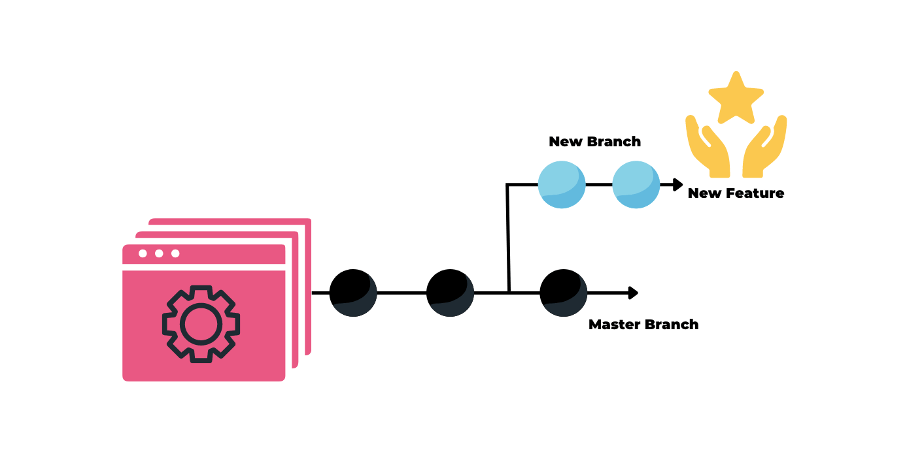
Intermediate DevOps Interview Questions
In this video, explore intermediate DevOps interview questions that not only test your skills but also offer actionable insights to elevate your career in DevOps.
Here are the most frequently asked intermediate interview questions:
14. What are the key metrics for DevOps success?
Here are the key metrics for DevOps success:
- Mean Time to Recover (MTTR): Speed of recovery after failures
- Deployment Frequency: Number of deployments over time
- Change Failure Rate: Percentage of failed deployments
15. How does Ansible work?
Ansible uses an agentless system to manage configurations over SSH, making setup easy and flexible for multiple nodes.
16. What is Continuous Testing (CT)?
CT is the automated testing within the CI/CD pipeline, providing immediate feedback on code quality and risks.
17. What are the Difference between Continuous Testing and Automation Testing?
The following describes the distinction:
| Continuous Testing | Automation Testing |
| All automated test cases are run through this process as part of the delivery process. | This process replaces manual testing by assisting the developers in creating test cases that can be executed repeatedly without manual involvement. |
| This procedure focuses on the commercial risks connected to the earliest possible software release. | Using a set of pass/fail locations as a guide, this process enables the developer to determine whether the features they have created are bug-free or not. |
18. Describe Jenkins’ master-slave architecture.
Jenkins distributes tasks with the master node delegating tasks to slave nodes, enabling parallel execution of jobs.
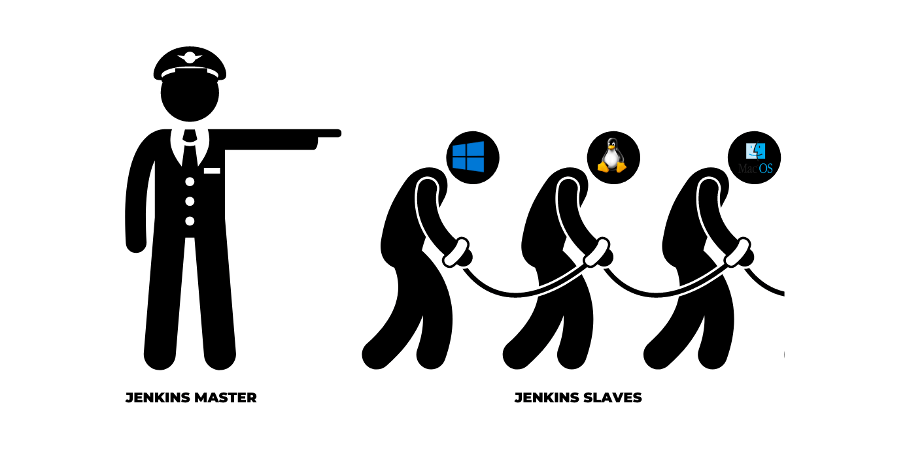
19. What are the key components of Jenkins pipelines?
Here are the key components of Jenkins pipeline:
- Pipeline: The sequence of steps from build to deployment
- Node: Part of Jenkins that runs tasks
- Step: A single task within a pipeline
- Stage: Organizes pipeline into distinct steps, like “Build” or “Test”
20. What are fundamental Git commands?
The following table summarizes a few of the fundamental Git commands.
| Command | Purpose |
| git init | To start a new repository. |
| git config – git config –global user.name “[name]”git config –global user.email “[email address]” | To set the user’s username and email address. |
| git clone <repository path> | To generate a local copy of a repository. |
| git add – git add <file names separated by commas>git add . | To add multiple files to the staging area. |
| git commit – git commit -a git commit -m “<add commit message>” | To create a record or snapshot of the file(s) in the staging area. |
| git diff – git diff [first branch] [second branch]git diff -staged | To display differences between the two branches mentioned and to contrast the current version with the staging area’s versions of the files. |
| git status | To make a list of every file that needs to be committed. |
| git rm <file name(s)> | To delete a file or files from the current working directory and also stages it/them. |
| git show <commit> | To display the metadata and content changes for the commit. |
| git branch – git branch [branch name]git branch -d [branch name]git branch | To create a brand new branch.To delete the mentioned branch.To list all of the branches that are available while highlighting the branch we are presently in. |
21. How can you copy Jenkins from one server to another?
- Step-1: Copy the relevant job directory to transfer the job from one Jenkins installation to the other.
- Step-2: To duplicate an existing job, clone the job directory and give it a new name.
- Step-3: Rename a directory to rename an existing job.
22. What are the resources in Puppet?
Here are the resources in Puppet:
- Resources are the main components of any configuration management tool.
- These are characteristics of a node, like its software or services.
- The action to be taken on or with the resource is described in a resource declaration that is written in a catalog.
- The node is put in the desired state when the catalog is performed.
23. What is an Ansible role?
An Ansible role groups tasks, variables, and files for reusability within playbooks.
24. What is a Dockerfile?
A Dockerfile contains instructions to build a Docker image, which packages an application and its dependencies.
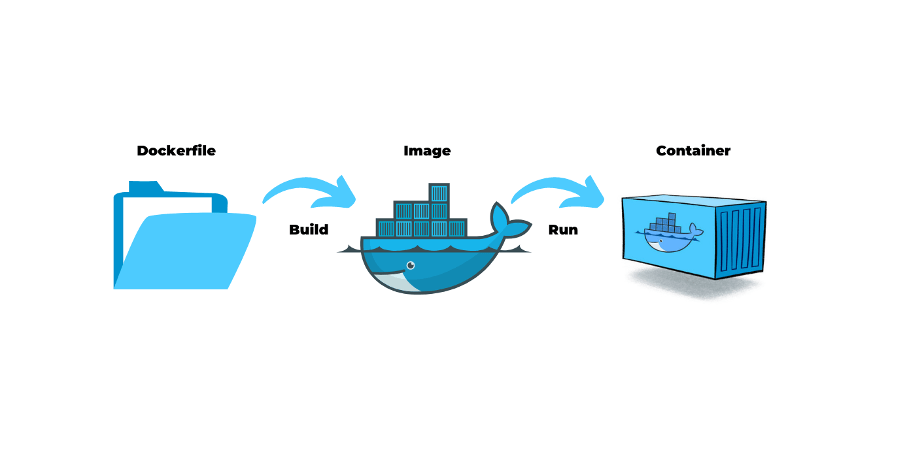
25. How do you run multiple containers as a single service?
Use Docker Compose to define and manage multiple containers within a single configuration file.
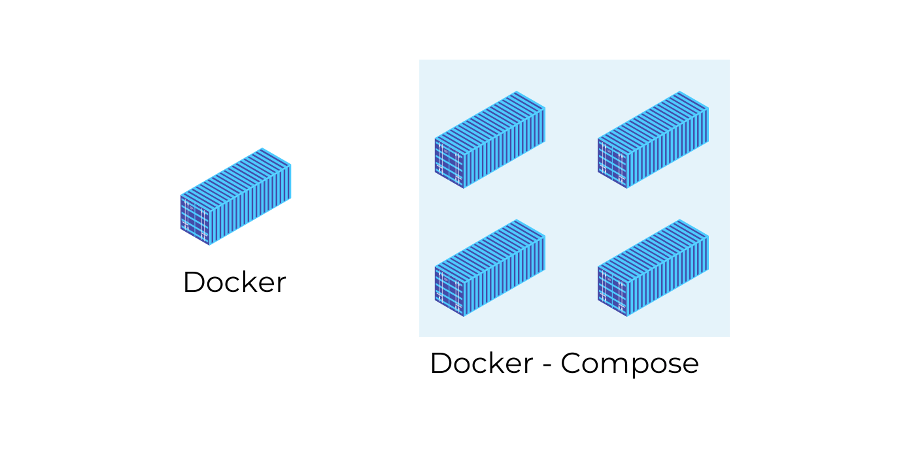
Experienced DevOps Interview Questions
In this video, DevOps Interview Questions for Experienced, you’ll find valuable insights into advanced DevOps interview topics, covering key questions that can help you stand out in your next interview.
Here are the DevOps interview questions for experienced:
26. What are top DevOps tools, and which have you used?
Key tools include Git, Jenkins, Selenium, Ansible, Docker, and Puppet. Describe the tools you’ve used and how they improved the deployment process.
27. How do these tools work together in DevOps?
Developers push code to Git, Jenkins builds and tests it, Puppet configures environments, and Docker containers manage deployment.
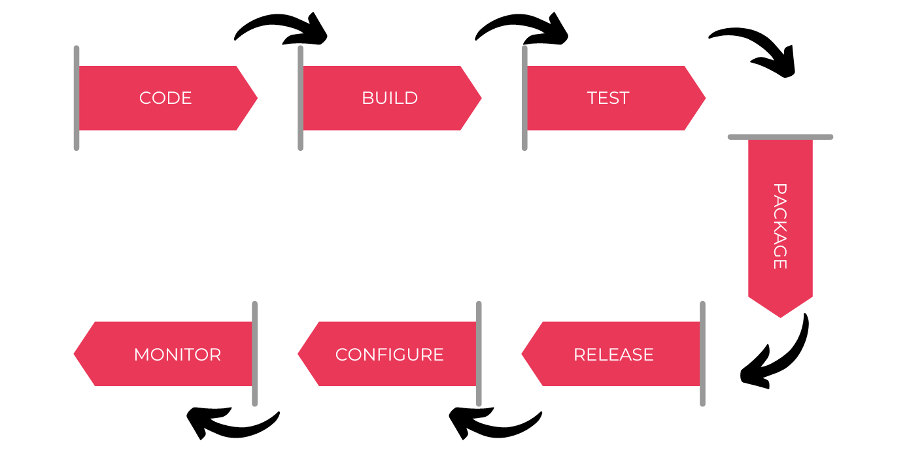
28. What are the Difference between Puppet Module and Puppet Manifest?
A Puppet Module is a structured collection of manifests, while a Manifest defines specific configurations.
29. How do you configure systems with Puppet?
Puppet can be configured in client-server mode using agents or in standalone mode.
30. What are the Difference between an Ansible playbook and ad-hoc commands?
- Playbook: Defines structured configurations for repeatable tasks.
- Ad-hoc Command: For quick, single-use tasks.
31. How does Ansible differ from Puppet?
Here are the difference between Ansible and Puppet:
| Ansible | Puppet |
| Easy agentless installation | Agent-based installation |
| Developed using Python | Developed using Ruby |
| Configuration files are written in YAML | Configuration files are written in DSL |
| no Windows support | support for widely used OSs |
32. Why are SSL certificates used in Chef?
SSL certificates secure communication between nodes and the Chef server, ensuring data privacy.
33. What is the difference between a Chef Recipe and a Chef Cookbook?
- Recipe: Contains instructions to configure software.
- Cookbook: Organizes multiple Recipes for a complete environment setup.
34. Describe Docker architecture
Docker uses a client-server model where the client sends commands to the Docker Daemon to manage containers.
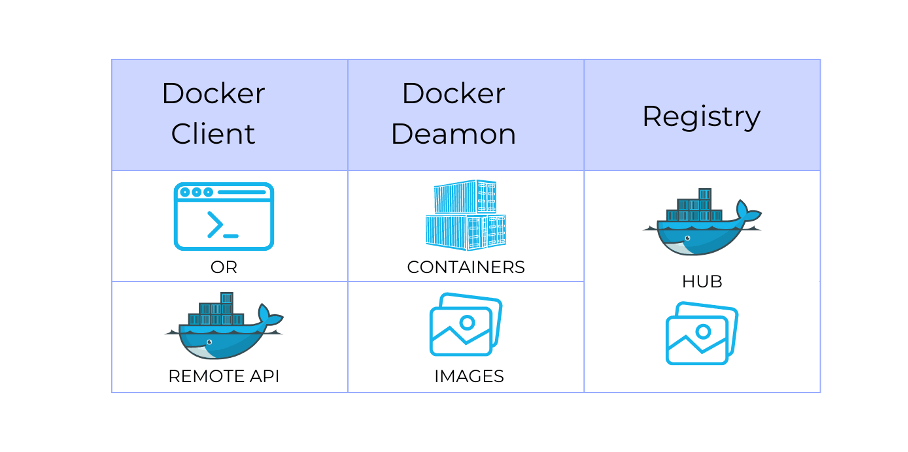
35. What is kubectl?
Kubectl is a command-line tool to interact with Kubernetes clusters, allowing deployment, management, and resource inspection.
36. Explain the components of Selenium.
The various components of selenium are as follows:
- IDE: For recording and playback
- RC: Allows scripting in any language
- WebDriver: Browser automation
- Grid: Runs tests on multiple machines
37. How do Containers communicate in Kubernetes?
Containers communicate through pods, each with its own IP, allowing seamless interaction across an overlay network.
38. What is Infrastructure as Code (IaC)?
IaC uses code to configure infrastructure, enabling repeatable, version-controlled environment setups.
Conclusion
As a DevOps Engineer, it’s essential to have a solid understanding of key processes, tools, and technologies. Knowledge of products, services, and systems used in DevOps adds value in a job interview. There is much to learn for a successful DevOps career, from automation tools to managing complex infrastructures.
These interview questions cover the most common topics for DevOps roles. For further preparation, Clarusway’s DevOps course offers in-depth training on relevant tools and techniques. Their Career Management System (CMS) helps prepare for job interviews by providing practical knowledge in DevOps.
Frequently Asked Questions About DevOps
What is DevOps?
DevOps is a collection of practices, principles, and cultural ideas that improve collaboration between development (Dev) and IT operations (Ops). The main goal is to streamline software development and delivery, making software releases faster and more reliable. DevOps, as defined by industry leader Patrick Debois in 2009, focuses on technique over technology. By working together, development and operations teams overcome barriers to continuously build, deploy, and monitor software.
What are the DevOps tools?
DevOps tools automate the software development process. They support different stages in the software production chain, including development, testing, networking, and operations. Using DevOps tools and practices helps businesses create software more efficiently and improves customer satisfaction.
What are the DevOps Jobs?
Large organizations have moved from on-premises servers to cloud services, which has increased demand for cloud-based DevOps jobs. Here are some common positions within DevOps:
AWS Developer:
AWS Developers focus on content delivery and solution-related code writing. They need a high-level programming language, experience with AWS, and an understanding of CI/CD pipelines and microservice architecture.
AWS Solutions Architect:
AWS Solutions Architects talk with clients to understand requirements and create AWS-based solutions. They must know AWS architecture, services, and cost management.
AWS DevOps Engineer:
AWS DevOps Engineers combine cloud computing with DevOps. They should have skills in programming, DevOps tools, and AWS services related to continuous delivery (CD) and continuous integration (CI).
AWS DevSecOps:
AWS DevSecOps roles integrate DevOps with security practices. Key skills include using DevOps tools, AWS security, CI/CD pipeline setup, and Terraform or CloudFormation knowledge.
Additional DevOps Jobs (Non-Cloud):
- Release Manager: Plans and manages the software lifecycle.
- DevOps Lead: Expert in tools like Jenkins, Git, Nagios, Zabbix, SVN, Chef, Puppet, and Ansible.
- DevOps Automation Expert: Skilled in Git, SVN, Bitbucket, and Jenkins.
- DevOps Testing Professional: Experienced in unit and build testing, Selenium, and MySQL.
What are the Requirements to Become a DevOps Engineer?
DevOps Engineers need strong problem-solving skills and the ability to work well with teams. They must understand the Software Development Life Cycle (SDLC) and be familiar with tools for automation, version control, and deployment. DevOps Engineers work across various IT companies, from startups to large enterprises.
Key DevOps Engineer responsibilities include:
- Setting up infrastructure management tools
- Using different programming languages and platforms
- Automating workload distribution across cloud services
- Implementing automated testing and deployment
- Supporting stakeholders across multiple platforms
- Developing tools to improve user satisfaction
- Managing versions using Git and similar tools




